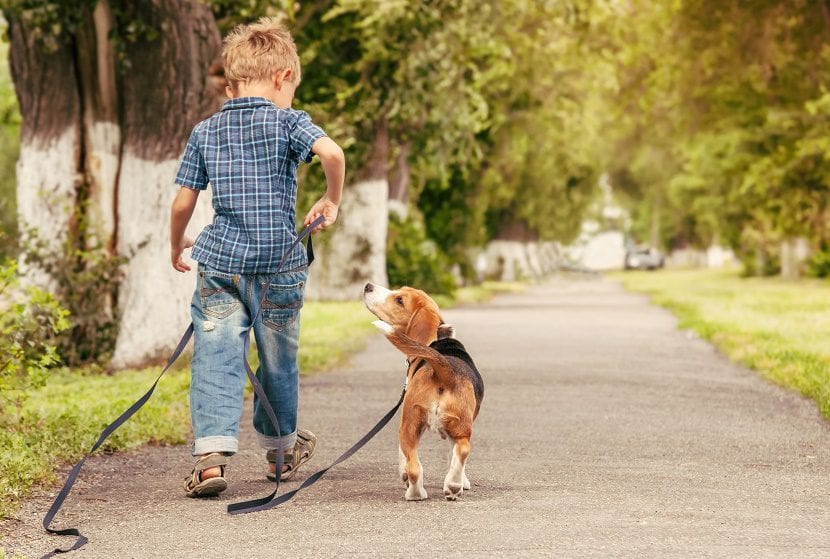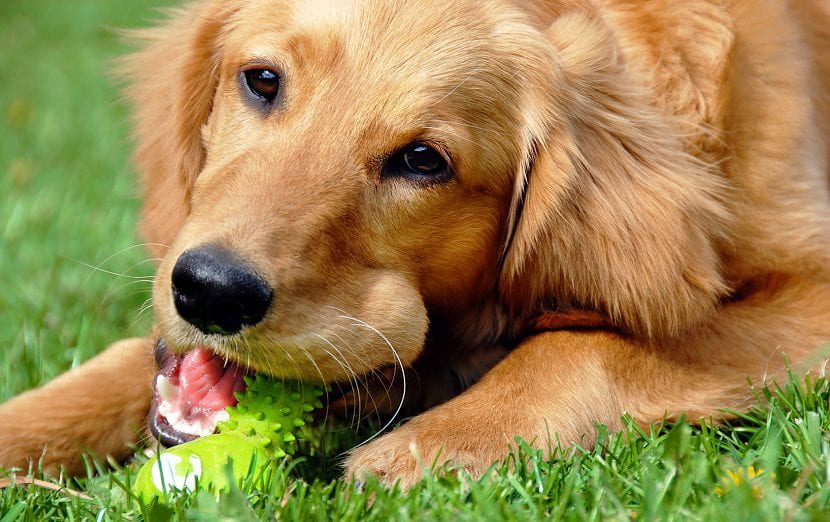
Just a few weeks ago I was in a park and I saw how one dog pounced on another without coming to mind and began to bite him ... you can imagine what the panorama was. The owners trying to separate the dogs (one of them, the attacker, clearly had to wear a muzzle since it was a breed called 'dangerous dogs') and the children crying at such a spectacle. My first thought was, what if that dog had attacked a child?
If you are a father or mother and you see a large dog, it is likely that the first thing you think about is protecting your child and preventing that dog from approaching him, but what if it is a friend's dog? Many people are bitten by dogs every year as if to let our children get close to strange dogs without further ado. There are even people who require surgery and be hospitalized because of a dog bite. Most of these people are children, and the bites could have been prevented with proper education.
To educate you have to understand why dogs bite
Dogs can bite for many reasons. This is important for pet owners to take into account before dogs are in an environment where there are also small children.. Dogs are considered domestic animals, but we cannot forget that they are pure emotional beings and that their behavior is based on their emotions and also on their instincts.
Bigger dogs are superior to small children and they can try to exercise their superior instinct by exhibiting their protective behavior towards a territory, a possession or a person, and can do this by biting the one they consider to be their opponent, in this case children.

Children under the age of five often do not understand the concept of limits when it comes to animals or human beings. This is much more evident when they relate to animals that are familiar to the child, such as domestic dogs or cats. The combination of a dog that wants to mark territory and a child that does not understand limits can lead to a serious problem.
When most bites occur
The vast majority of dog bites occur in children with familiar dogs, that is to say with dogs of friends, relatives or those of the family itself. A dog can bite if provoked by a child that, for example, pulls his tail, his hair or his ears. If a child gets too close to a dog and startles him, the dog may also attack. Dogs can bite for other reasons such as being sick or in pain. If a dog sees a child running and sees him as prey, it can also provoke an attack.
Most of the injuries that occur are usually on the head, neck or other facial regions so it is necessary to be very careful since the injuries can be very serious. This type of bite in children is likely due to the proximity of a child's face to the dog's mouth.
Teach children to prevent dog bites
You need to teach children about dog bite prevention and how to be safe around them. To do this whenever you have the opportunity you will need to talk about the dogs, about how you relate to them, the role of animals in the family ... and how to avoid being bitten.

If you have small children it is important that you supervise them whenever they are around dogs and that you are aware of how the child interacts with the dog, so that they learn to treat them gently and sweetly from the beginning. Don't miss out on these tips to help children understand the importance of respecting dogs and avoiding potential bites.
- Avoid approaching unfamiliar dogs.
- If you know the owner of the dog, you should ask the owner for permission to pet the dog and that the first time is always with the owner's help.
- Don't let your child play alone with dogs do not allow her to approach aggressive or "dangerous dogs" unsupervised.
- Teach children not to yell, run, hit, or make sudden movements near or towards the dog.
- Give instructions to children, if a dog is after them, it must not run, it must be a tree, be silent with its hands down, and remain still as if looking at its feet. If a dog throws him to the ground, you should teach him to cover his head and neck with his arms and curl up.
- Teach the child to respect the dog's special place and that when he is there he will not be able to approach. It can be the doghouse or your sleeping bed. But do not isolate your dog from the family, he must know that you are all a pack.
- Educate your child to understand the body language of dogs.
- Teach children that dogs also have feelings and emotions and sometimes they may want to play and sometimes not and nothing will happen, but you must respect that. It should never be disturbed while sleeping or while with its young.

- Teach children that they should never pull a dog's tail, or its ears, or do anything rough to it.
- Keep dogs away from the room where there are babies unless there is direct and constant supervision by an adult.
- Let the dog smell your child before he strokes him and keep your child away from the face or tail. Ideally, pat the dog gently avoiding eye contact, especially at first.
- Do not give children responsibility for domestic dogs too early, especially when they are not ready for it yet.
If, despite all this, your child has been bitten, you should request the dog's vaccination card and obtain the contact of the dog's owner. Wash the wound quickly with soap and water and take your child immediately to a medical center.